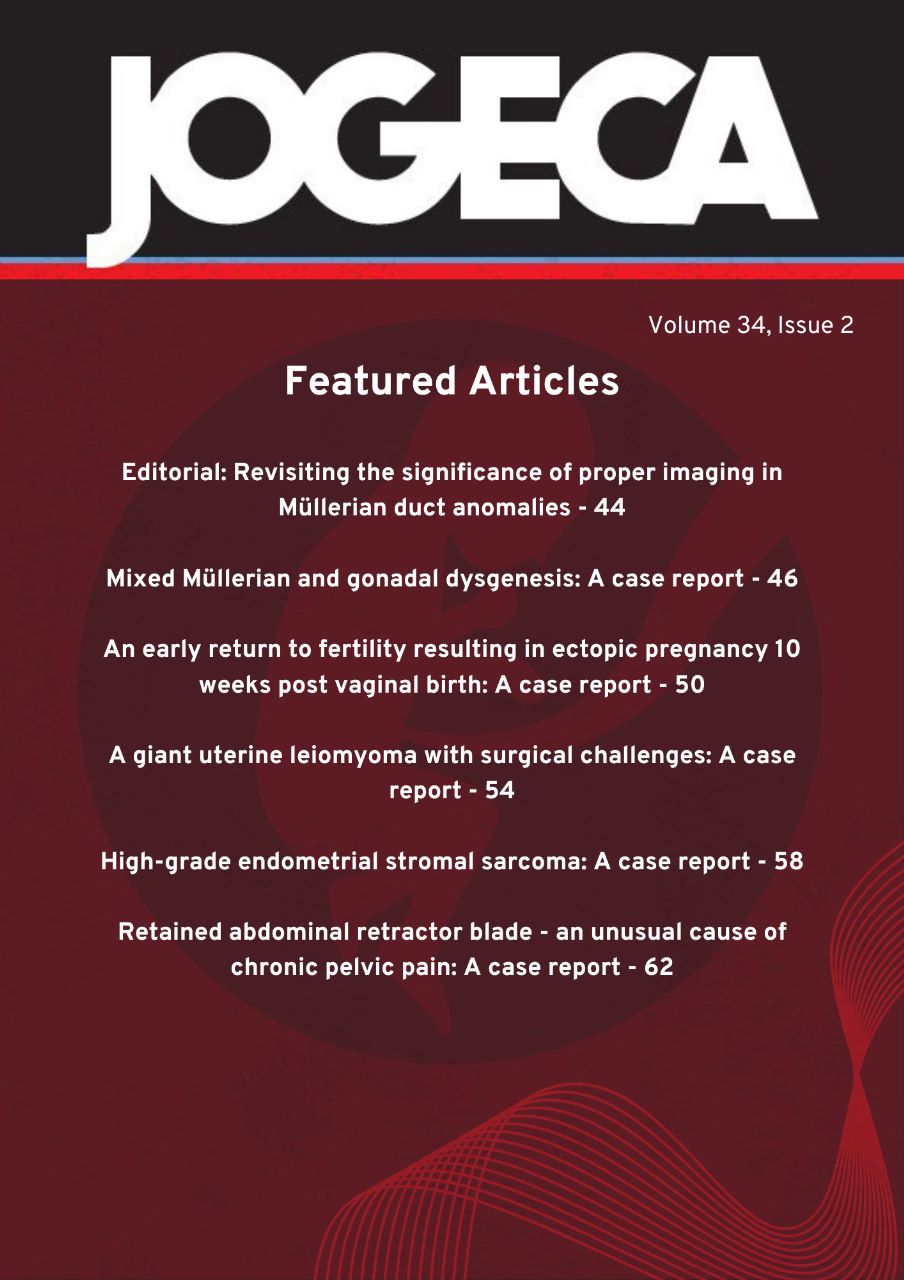Bladder endometriosis – diagnostic and management challenges: A case report
DOI:
https://doi.org/10.59692/jogeca.v36i1.138Abstract
Background: Urinary tract endometriosis (UTE) is the presence of endometriotic implants in the bladder,
ureter, kidneys, or urethra. It affects ~1% of women with endometriosis and occurs more commonly
among those with deep infiltrative endometriosis. Bladder endometriosis is the most common
presentation, comprising 85% of cases. Concomitant involvement of the bladder and ureter is rare,
comprising 1.4% of all cases. The clinical presentation involves lower urinary tract symptoms, that
worsen during menses. Timely diagnosis and treatment are crucial in ameliorating symptoms and
preventing complications, such as obstructive nephropathy. This is a case of bladder endometriosis with
ureteral involvement, outlining management challenges, reviewing evidence on management
approaches, and highlighting the experience gained from this case in managing complex UTE.
Case presentation: A 38-year-old female presented with a longstanding history of pelvic pain, dysuria,
and new-onset voiding difficulty. She had undergone two prior surgical procedures for endometriosis,
including a total abdominal hysterectomy. Her physical examination was normal. Ultrasound revealed a
3-cm intracavitary bladder mass, which was described as likely endometriosis on magnetic resonance
imaging. On cystoscopy the mass was noted to be larger, encasing the left ureteric meatus. A
laparoscopic cystostomy was performed, with partial resection of the mass and placement of a temporary
ureteric stent. After three months of medical treatment with dienogest, cystoscopy revealed a significant
reduction in size with sub-centimeter residual avascular tissue. This was resected avoiding the ureter and
ureteric meatus. A new ureteric stent was placed. A repeat cystoscopy three months later revealed good
healing with no residual endometriosis. The stent was removed, and a retrograde pyelogram confirmed
no meatal stenosis or ureteric obstruction. She has remained symptom-free.
Conclusion: Medical and surgical options are available for bladder endometriosis, with partial
cystectomy being the gold standard. The initial approach is dependent on the size of the lesion and the
extent of ureteric involvement. A staged approach that combines medical or surgical management can
ensure optimal outcomes while reducing surgery-associated morbidity in complex cases.
Downloads
Published
How to Cite
Issue
Section
Categories
License
Copyright (c) 2024 The Authors.

This work is licensed under a Creative Commons Attribution 4.0 International License.




